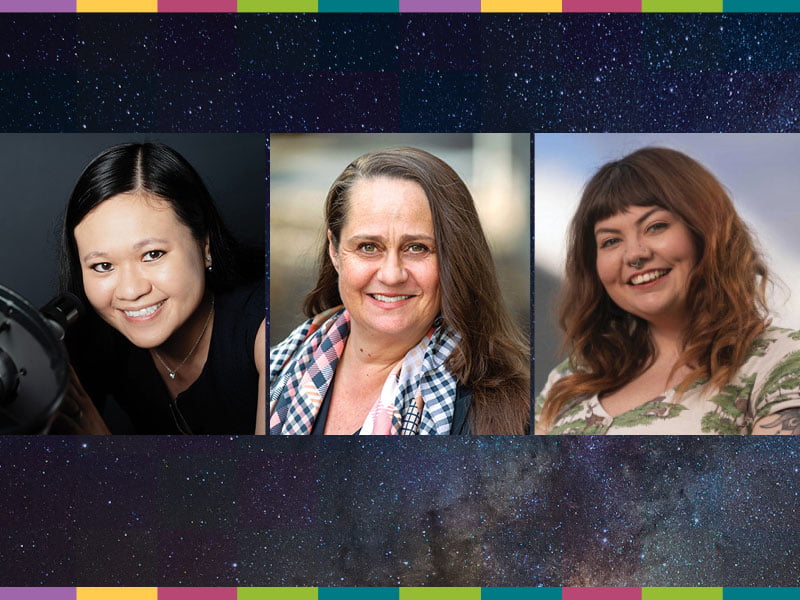Indigenous knowledge of astronomy is now starting to be recognised for its complexity, according to Indigenous astronomer, astrophysicist, science communicator and Gamilaraay woman, Karlie Noon.
Ms Noon is an advocate for First Nations knowledge and has conducted research on how moon halos were used in traditional Aboriginal and Torres Strait Islander culture as weather predictors. She has recently started her PhD in astronomy.
“There are parts of Indigenous astronomy that modern day astronomy is only starting to acknowledge,” she said.
“Although the techniques of observation and applying scientific methods – such as whether something is repeatable – have similarities, however, we are talking about two very different knowledge systems.”

One of these differences is in the way information is transmitted. “In an oral culture, knowledge will be in a package and that package is a story transmitted through stories, song, dance and ceremony.
“The story will have a lot of scientific information in there, but it also has a thread holding it together. It gives a context and meaning to the knowledge, instead of just having a fact as a standalone factor.”
Reading the classics in her university studies provides an insight into the way knowledge systems develop, according to Dr Karen Lee-Waddell, the director of the Australian Square Kilometre Array Regional Centre (AusSRC).
“It was interesting to see how ancient scholars/philosophers used to think about things and piecing together concepts,” said Dr Lee-Waddell.
“I wanted to understand why planets were named the way they were and that meant learning about ancient Greek and Roman mythology,” she said.
This led to reading how the ancients would do mathematics and discovering that those theorems are still relevant today. “We really are standing on the shoulders of giants because these early scholars had nothing, and they created all these concepts and we’re still using and testing them to this day.”
Karlie Noon and Dr Karen Lee-Waddell spoke with InnovationAus Publisher, Corrie McLeod, as part of See What You Can Be, a series championing Australia’s extraordinary female changemakers who are blazing new pathways across the STEM sector. This episode discussed how a passion for what has been previously discovered led to careers focused on the stars.
Dr Lee-Waddell, who is leading the Australian effort to build computing and data intensive research capabilities that will support astronomers using the next generation of telescopes, has a focus on some of the most fundamental questions of human existence.
“We’re building the biggest telescope that we can – to answer these big questions,” she said. “Some of these questions include things like how the first stars and black holes formed and how galaxies evolve.
“Was Einstein right about gravity? What is this dark energy phenomenon that we keep hearing about? And why is the universe expanding? And, then one of the biggest questions that the centre hopes to answer is ‘Are we alone in the universe?’.”
For Ms Noon, an interest in philosophy led to a fascination with cosmology and a book that changed everything. “I read A Brief History of Time” by Stephen Hawking and getting an understanding of how we don’t really know all that much was my gateway into astronomy and science,” she said.
The cultural aspect and discovering the commonalities as well as the differences between Western and Indigenous knowledge has given Ms Noon a profound interest and commitment to astronomy and the common threads even with different knowledge systems.
“Although Indigenous knowledge systems are presented in a very different way to Western knowledge systems, we have one sky. We’re looking at the same thing, whether you’re from an Indigenous culture or not,” she said.
Find out more about See What You Can Be, where insightful women share what they have learned on their STEM journey – including success stories, opportunities and barriers to entry – while encouraging viewers to challenge outdated stereotypes.
Are you interested in supporting the See What You Can Be series? Find out how you can become a Sponsor.
InnovationAus.com has partnered with Cool Australia to make the video recordings and assets from See What You Can Be available to teachers all over Australia as resources, should they fit elements of their teaching focus.
Do you know more? Contact James Riley via Email.
